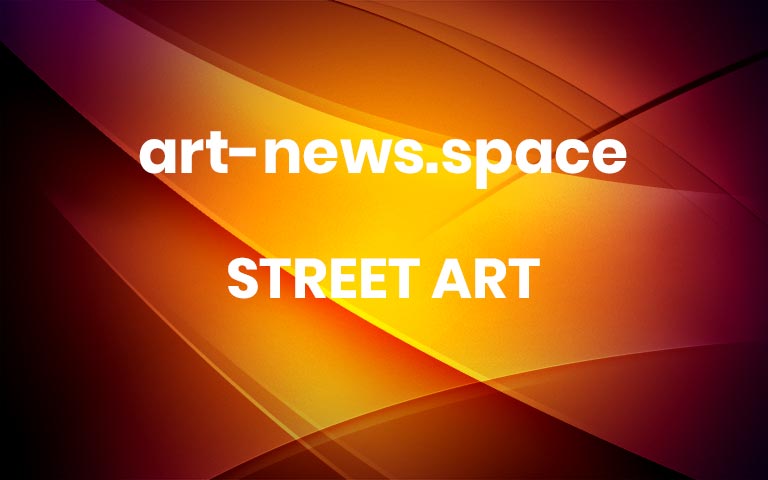Well folks, it’s finally happened: the U.K. government has given museums the green light to reopen to the public, and the culture-starved among us have engaged in a battle royale to secure tickets to see the best of what the country’s institutions have to offer.
From the main contenders (Heather Phillipson at Tate Britain and David Hockney at the Royal Academy) to the lesser-known gems (Shara Hughes at the Garden Museum), here are 11 exhibitions not to miss in the U.K. this spring.
Shara HughesGarden Museum, LondonMay 17–June 15
Installation view, Shara Hughes, Garden Museum, London, 17 May–5 June, 2021. Courtesy of the artist and Pilar Corrias, London. Photo by Mark Blower.
For the New York artist’s first museum exhibition in the U.K., Shara Hughes has created a new series of site-specific works for the Garden Museum. Four large-scale paintings of flowers as well as works on paper will hang in the magnificent setting of the nave of the museum, a deconsecrated medieval church.
Mercedes Azpilicueta: Bondage of PassionsGasworks, LondonMay 19–July 4
Mercedes Azpilicueta, The Lieutenant-Nun is Passing: An Autobiography of Katalina, Antonio, Alonso and More (2021). Detail of Jacquard tapestry. Courtesy of the artist. Photo: Joel Furness.
As part of her ongoing quest to dig out subversive and contested histories, the Amsterdam-based artist Mercedes Azpilicueta has offered a speculative vision of the real-life Catalina de Erauso, a 17th-century Spanish nun who moved to the New World and lived under male identities, and eventually became a ruthless lieutenant in the Spanish colonial army. Through a series of Jacquard tapestries, sculptures, costumes, and props, Azpilicueta recenters unheard voices from the past.
Ryoji Ikeda180 Studios, LondonMay 17–August 1
Ryoji Ikeda, test pattern ©Jack Hems, 180 The Strand, 2021, presented by Vinyl Factory in collaboration with Audemars Piguet Contemporary.
For his largest solo exhibition to date, the Japanese audio-visual artist Ryoji Ikeda has filled the inside of 180 Studios with a series of mind-bending digital sculptures. Including flashing strobe lights and sound frequencies the human ear struggles to comprehend, the spectacular exhibition tests the limits of the human senses.
Walter Price: Pearl LinesCamden Art Center, LondonMay 21–August 29
Walter Price, The fate of the animals (2019). Courtesy: Greene Naftali.
For his first institutional exhibition in the U.K., the U.S. artist Walter Price is showing paintings, works on paper, and sculptures created during his 2020 residency at Camden Art Center and during lockdown in New York. Some of the more remarkable new works possess a more subdued palette than we expect from the painter, whose rich language of symbols usually dances over bright fields of color. The resulting works echo his own exhaustion with relentless cycles of consumption, as well as with being a Black man invited to occupy and contend with “white” spaces.
Artes Mundi 9National Museum CardiffMarch 15–September 5
Firelei Báez, Left to right: Untitled (City Incinerator ‘B’) (2021) and Untitled (A Map of the British Empire in America) (2021). Installation view: Artes Mundi 9, Cardiff, 2021. Photo by Polly Thomas.
The biennial exhibition and prize Artes Mundi 9 brings a top selection of international artists to the National Museum Cardiff in Wales. Artists include Firelei Báez, Dineo Seshee Bopape, and Carrie Mae Weems. Their presentations explore themes such as the legacy of colonialism, environmental change, and intergenerational trauma and healing.
Tony CraggHoughton Hall, NorfolkMay 19–September 26
Tony Cragg at Houghton Hall. Photo by Jeff Spicer/PA Wire.
The British sculptor and Turner Prize-winning artist Tony Cragg has taken over the grounds and interiors of Houghton Hall in Norfolk with a series of spectacular sculptures. Cragg has curated the selection himself, from monumental bronze and steel sculptures in the gardens, to smaller pieces inside the grand house’s state rooms and galleries.
David Hockney: The Arrival of Spring, Normandy 2020Royal Academy, LondonMay 23–September 26
David Hockney, No. 118 (March 16, 2020). ©David Hockney.
David Hockney is showing 116 iPad paintings at the Royal Academy that chronicle the arrival of spring in Normandy last year. The colorful paintings of flowers in bloom express optimism about the future and hope for renewal.
Pakui Hardware: Virtual CareBaltic Center for Contemporary Art, GatesheadMay 18–October 3
“Pakui Hardware: Virtual Care” installation view, Baltic Centre for Contemporary Art 2020. Photo: Rob Harris © 2020 Baltic. Courtesy: the artists and carlier|gebauer (Berlin/Madrid). Commissioned by BALTIC centre for contemporary art.
Artists Neringa Cerniauskaite and Ugnius Gelguda, who together go by Pakui Hardware, are presenting their first solo exhibition in the U.K. at Baltic. Their site-specific commission transforms the space into a quasi surgery room, where technological tools and robotic surgeons are responsible for caring for abstract resin bodies. The poignant installation probes issues around virtual care at a time when people have been largely separated.
Alice: Curiouser and CuriouserVictoria and Albert Museum, LondonMay 22–December 31
Still from Curious Alice, a VR experience created by the V&A and HTC Vive Arts. Featuring original artwork by Kristjana S Williams, 2020.
The V&A is finally opening its long-anticipated Alice in Wonderland exhibition, which will trace the story of Alice from her 19th-century origins to the global cultural phenomenon she is today. The exhibition will also include a VR experience in which visitors can travel down the rabbit hole themselves and try their hands at a game of croquet with the Queen of Hearts.
Heather PhillipsonTate Britain, LondonMay 17–January 23, 2022
Tate Britain Commission: Heather Phillipson: Rupture No.1: blowtorching the bitten peach. ©Tate photography (Oliver Cowling).
Heather Phillipson, the artist behind the monstrous whipped cream sculpture on Trafalgar Square’s Fourth Plinth, has utterly transformed the Duveen Galleries at Tate Britain. In her signature style, she has created three distinct environments that through lighting, soundscape, and installation imagine alternative realities that hint at (but do not explicitly evoke) contemporary anxieties about environmental collapse and technological takeover. Within the unsettling installation, familiar industrial materials like fuel tanks and a collapsed silo have been remade into strange beasts, while animal eyes peek out at you from behind LED screens.
Masterpieces From Buckingham PalaceQueen’s Gallery, LondonMay 17–January 31, 2022
Jan Steen, A Woman at her Toilet (1663). Royal Collection Trust/© Her Majesty Queen Elizabeth II.
This is a rare chance to catch a glimpse of some of the most important works from the Royal Collection at Buckingham Palace while its Picture Gallery is undergoing renovations. Masterpieces acquired by generations of royals are on view, including works by Titian, Vermeer, Rembrandt, Rubens, and Jan Steen.
Follow Artnet News on Facebook: Want to stay ahead of the art world? Subscribe to our newsletter to get the breaking news, eye-opening interviews, and incisive critical takes that drive the conversation forward. More



